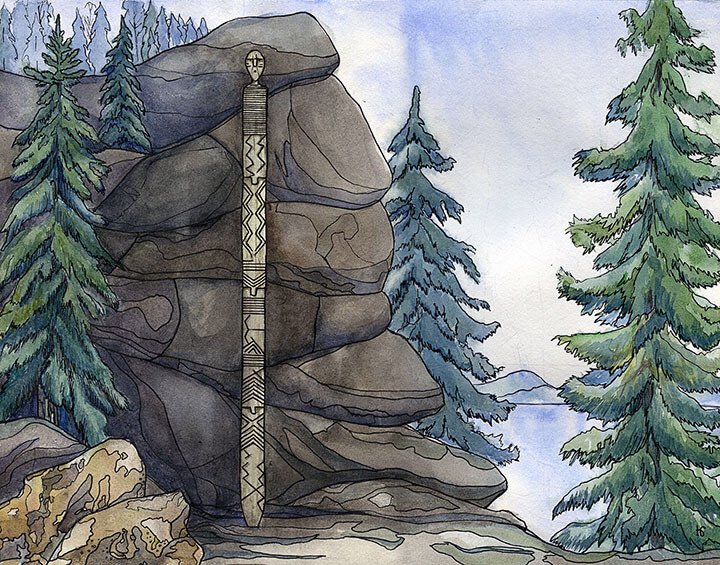
Dating back to the end of the last Ice Age, the Shigir Idol stands as a testament to human artistry and ingenuity. The wooden sculpture, possibly once towering above 5 meters, is heralded as the world’s oldest known wooden statue, predating the Egyptian pyramids by thousands of years. Housed in the Sverdlovsk Regional Museum of Local Lore in Yekaterinburg, Russia, the Shigir Idol’s wood has been carbon-dated to be around 12,000 years old.

Unearthed in 1890 in the Shigir peat bog on the eastern slopes of the Middle Urals, the discovery of the Idol was a historic moment. Initially found in fragments, the sculpture was reassembled to stand at 2.8 meters by Professor D. I. Lobanov. Later reconstructions, based on drawings by archaeologist Vladimir Tolmachev, suggested it may have originally reached over 5 meters in height.

Initial dating methods estimated the idol to be 9,500 years old, a figure met with skepticism as it challenged the established understanding of the era’s hunter-gatherers. Subsequent German analyses corrected this age to 11,500 years, with recent AMS dating methods confirming the timeline, marking the beginning of the Holocene epoch.
The sculpture, carved from larch wood using stone tools, displays geometric patterns, including zigzags and human faces, consistent with art from the Late Paleolithic to Early Mesolithic periods. These decorations could signify a variety of meanings—from creation myths to territorial markers, as suggested by researchers and archaeologists.

Remarkably, the Shigir Idol’s preservation is owed to both the phytoncidic nature of larch and the peat bog’s acidic, anaerobic conditions which deter microorganisms and have a tanning effect. The statue’s discovery has significantly altered the timeline of ritualistic art history, pushing back the emergence of complex art by several millennia.

This sculpture provides invaluable insights into prehistoric life, art, and spirituality. Its survival is a rare occurrence, hinting at the possibility of more such artifacts that time has reclaimed. The Shigir Idol not only predates but also parallels monumental stone ruins like those at Göbekli Tepe, suggesting a widespread human expression of the sacred through art in the prehistoric world.





